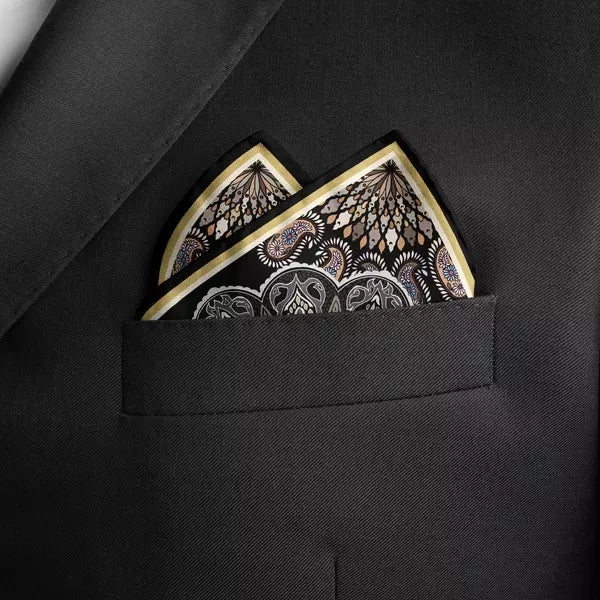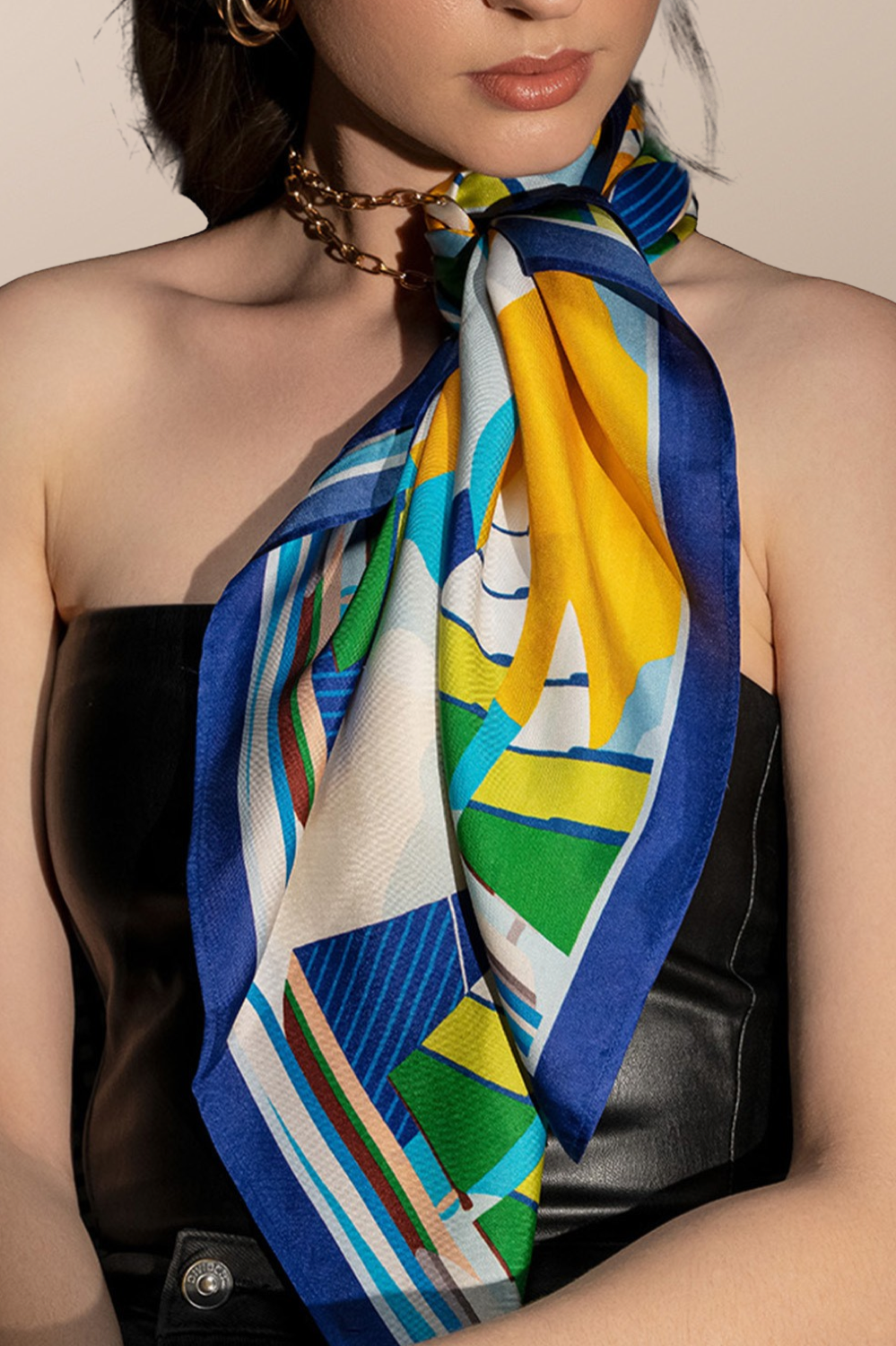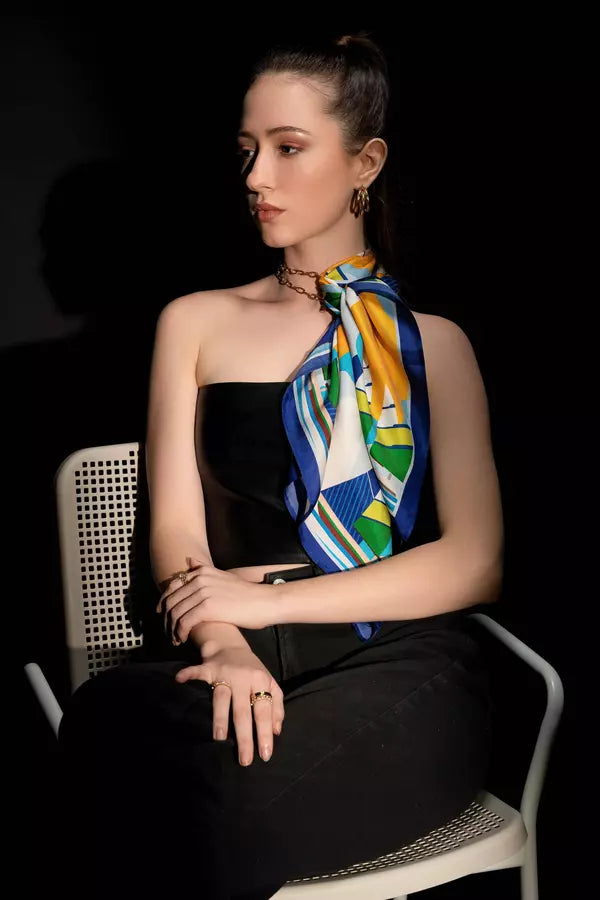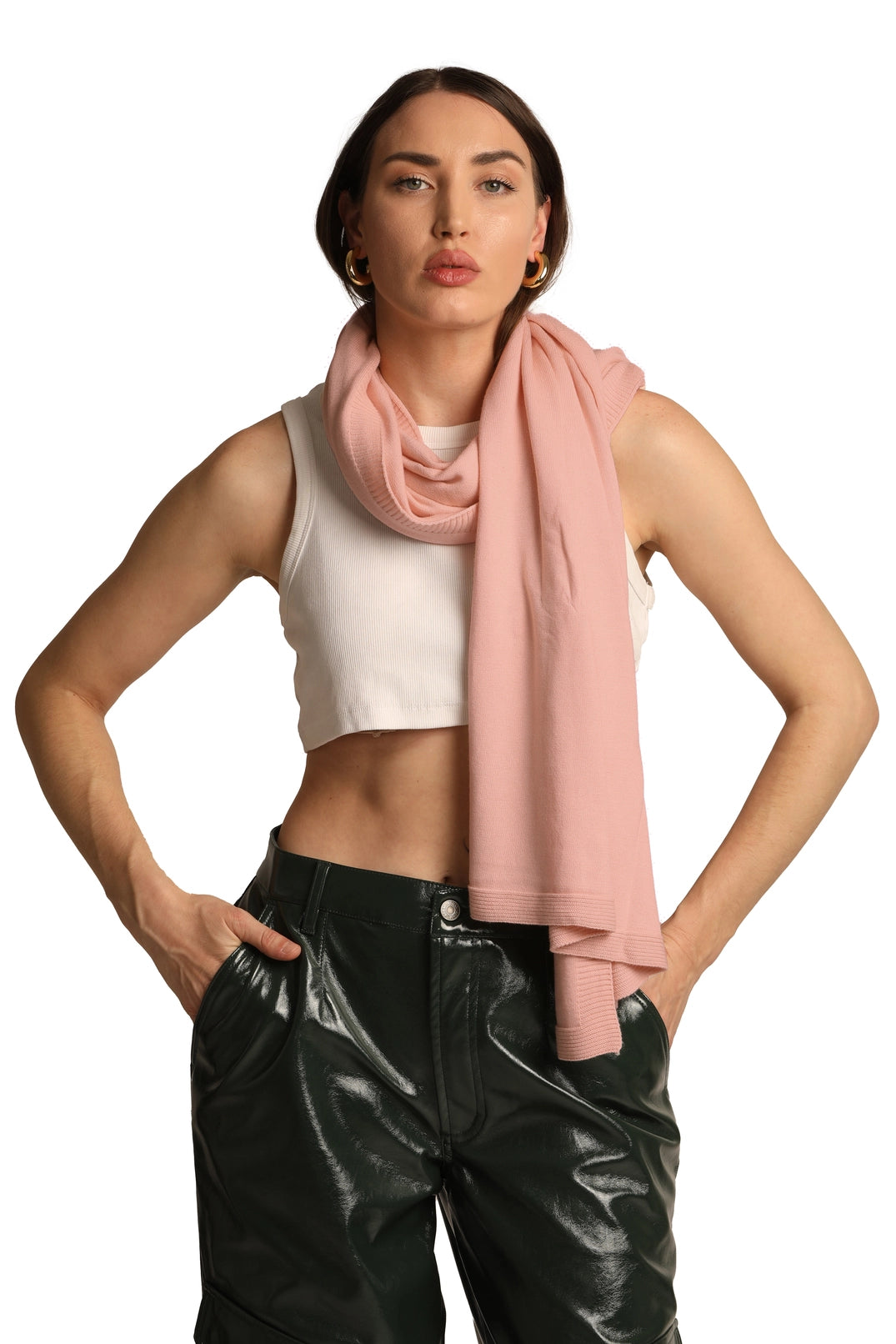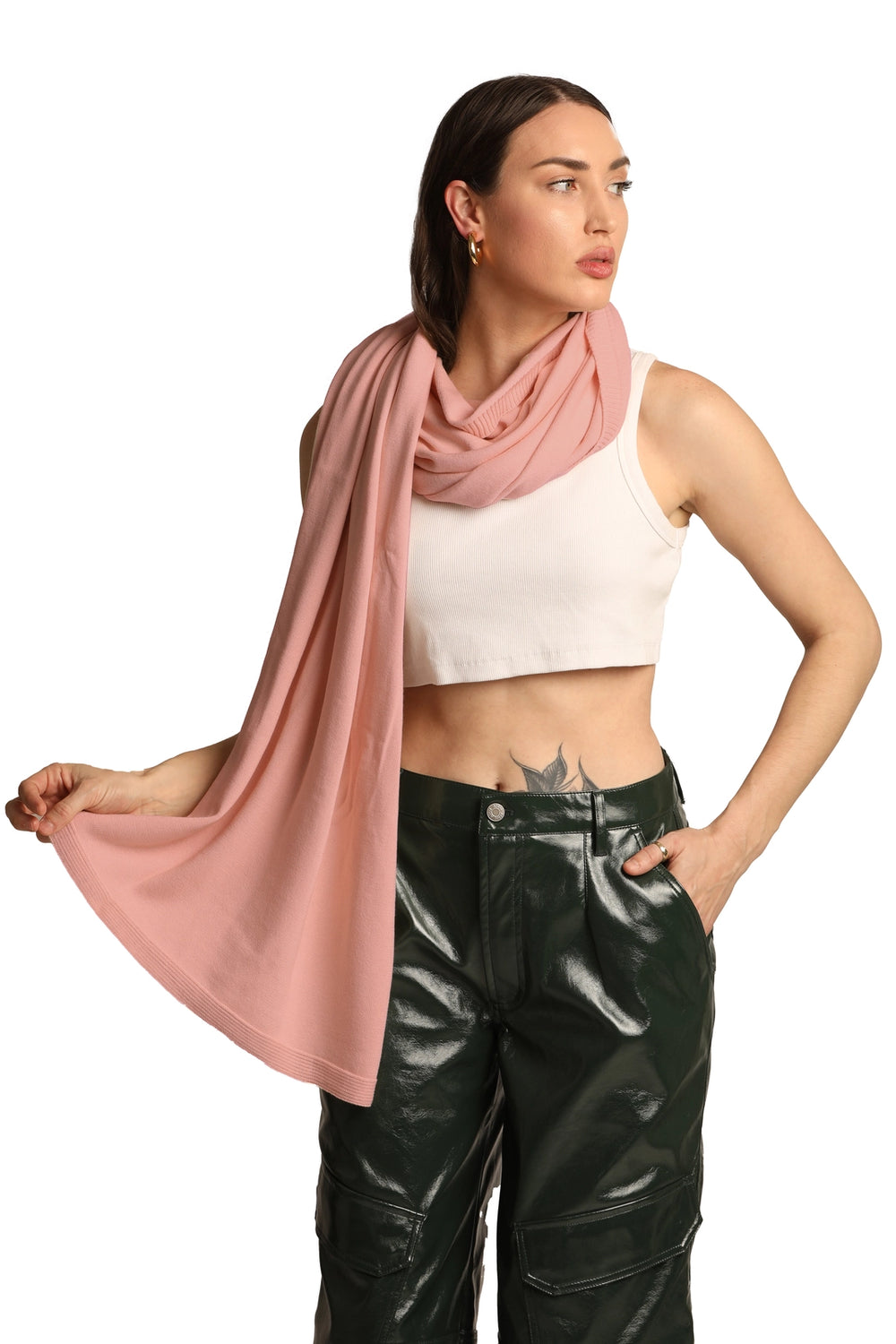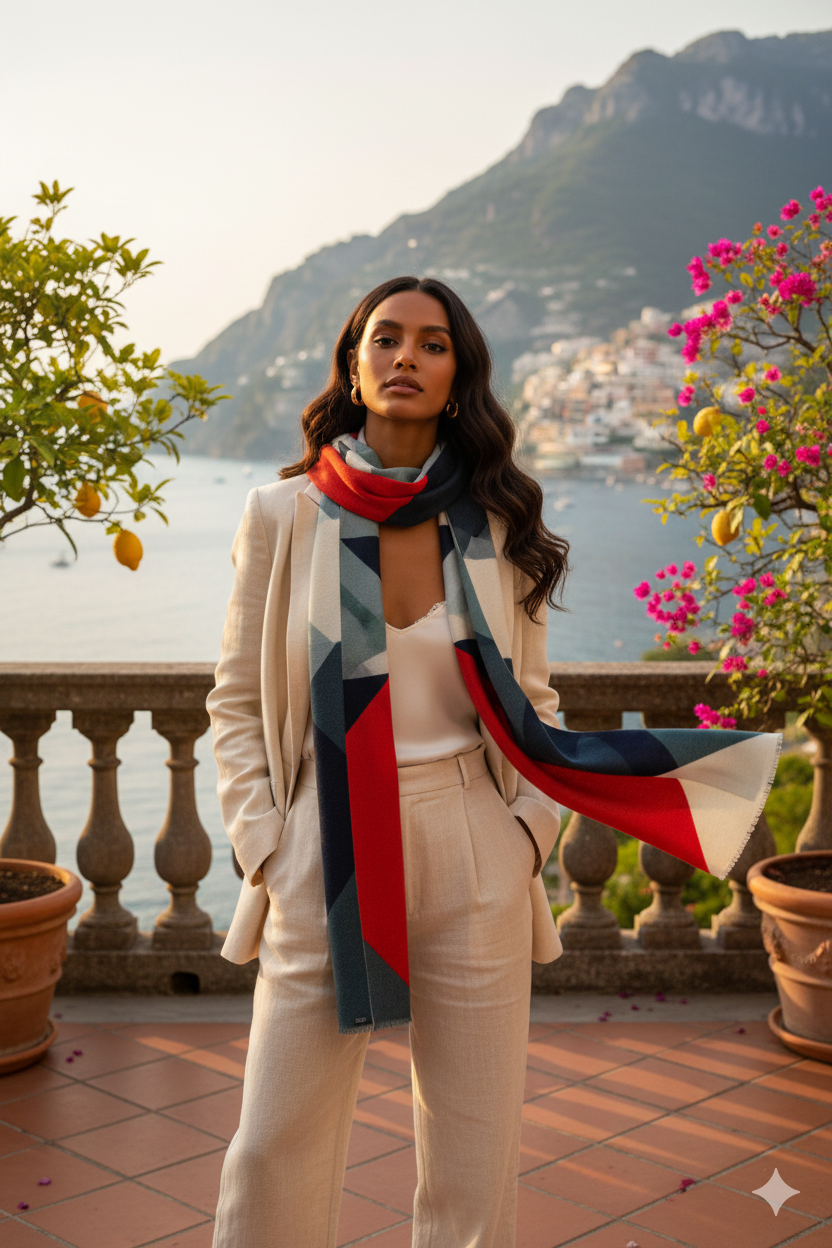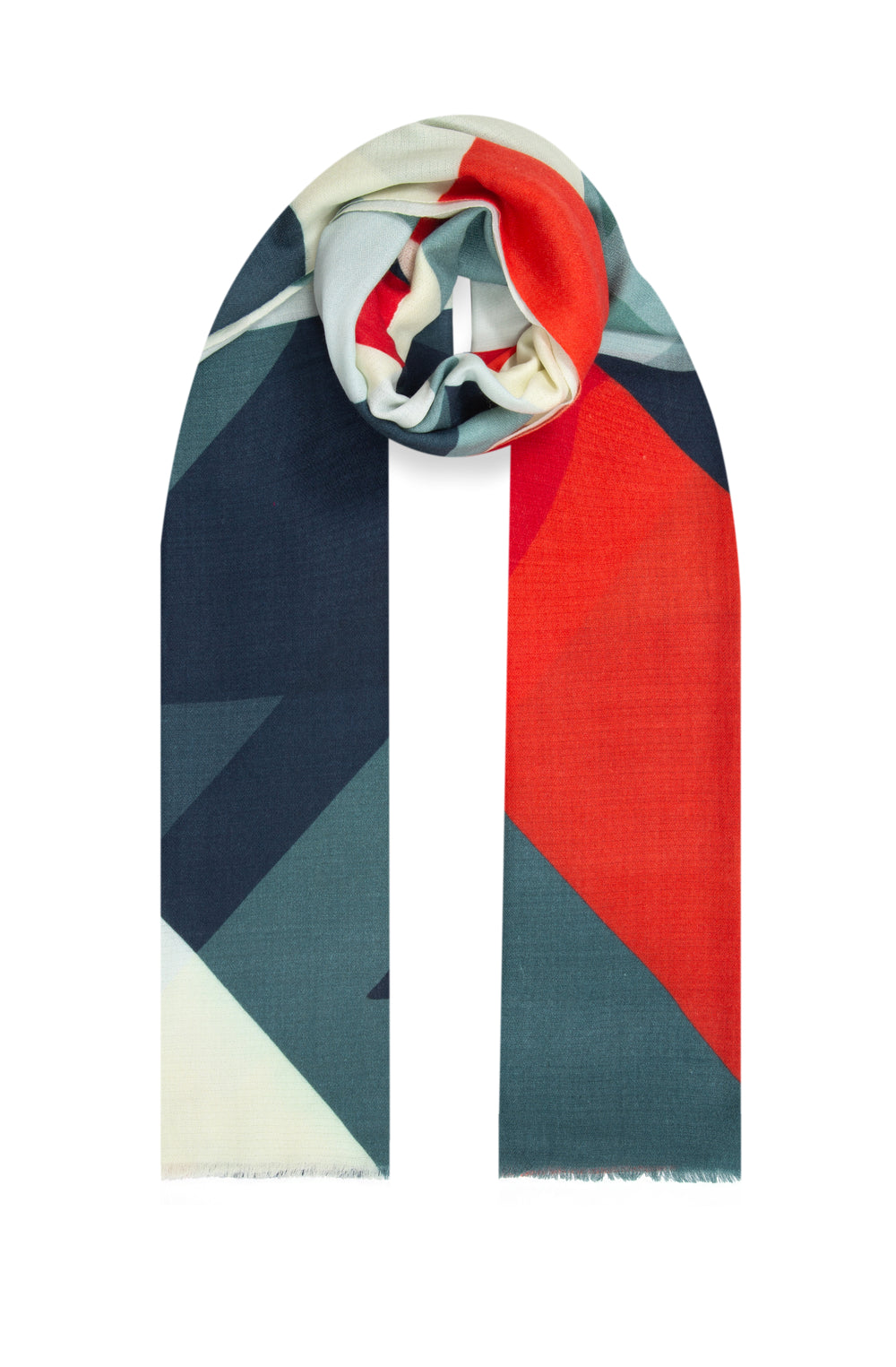Sustainable Sophistication: Embrace Eco-Friendly Shawls for a Stylish Look
Eco-Friendly Shawls

Eco-friendly shawls are a fantastic way to jazz up your wardrobe while doing a solid for Mother Earth. Made from sustainable materials, these shawls come in a variety of chic designs that cater to those who love a touch of luxury without the guilt.
Sustainable Shawl Materials
These shawls are made from materials that are easy on the planet. They not only look and feel great but also help reduce our environmental footprint. Here are some top picks:
- Organic Cotton: This cotton is grown without nasty chemicals. It's soft, breathable, and breaks down naturally.
- Bamboo: Bamboo grows like a weed and is 100% biodegradable and antibacterial. When processed right, it turns into a strong yet soft fabric ( Barbulianno Design).
- Cork: Harvested from cork oak trees, this material is super renewable. It's tough, moisture-resistant, and can absorb vibrations, making it a cool choice for shawls.
- Alpaca Wool: Alpacas are gentle grazers, so their wool has a low environmental impact. Processing it uses minimal energy and water, and it doesn't need harsh chemicals ( State of Matter Apparel).
- Bananatex®: Made from banana plant fibers, this fabric grows fast without pesticides or extra water. It supports biodiversity and healthy ecosystems.
Eco-Friendly Shawl Designs
These shawls come in a range of designs and colors, perfect for any occasion. They’re stylish and sustainable, so you can look good and feel good.
- Windmill Scarf: Available in pastel green, tobacco, and blue, this scarf is light and breezy, perfect for summer nights.
- Paisley Harmony Scarf: This multi-colored scarf with intricate paisley patterns is great for formal events.
- Boro Scarf: In matcha green and blue, this scarf blends traditional craftsmanship with modern style, ideal for casual wear.
| Shawl Design | Colors Available | Ideal Occasion |
|---|---|---|
| Windmill Scarf | Pastel Green, Tobacco, Blue | Summer Nights |
| Paisley Harmony Scarf | Multi-Color | Formal Events |
| Boro Scarf | Matcha Green, Blue | Casual Wear |
For more options, check out our collection of luxury shawls and sustainable shawls. These shawls not only boost your style but also support a greener fashion industry.
Certifications and Standards
When it comes to eco-friendly shawls, certifications and standards are your best friends. They help verify that these luxurious wraps are both sustainable and ethically made. Here's a rundown of some key certifications to keep an eye out for.
ISO 14001 Certification
ISO 14001 is like the gold star for environmental management. It gives companies a solid framework to manage their environmental impact. Usually, big companies with deep pockets go for this certification because it takes a lot of time, money, and resources ( Green Business Benchmark). If a shawl brand has ISO 14001, you know they're serious about being green.
ISO 14001 Perks:
- Cuts down on waste and energy use
- Boosts the company's image
- Keeps them on the right side of the law
B Corp Certification
B Corp Certification is like a report card for companies, grading them on social and environmental performance, transparency, and accountability in five areas: Governance, Workers, Community, Environment, and Customers. It's a tough process, but worth it.
B Corp Perks:
- Shows they're making a positive impact
- Builds customer trust
- Enhances brand reputation
Fair Trade USA Certification
Fair Trade USA Certification ensures that companies are playing fair throughout their supply chain. This means fair prices, good working conditions, and a lighter environmental footprint. The certification comes with quarterly fees that vary depending on the business type. Shawls with this certification mean the artisans are getting a fair deal.
Fair Trade USA Perks:
- Guarantees fair wages and safe working conditions
- Supports community development
- Promotes environmental sustainability
Safer Choice Certification
The Safer Choice certification by the Environmental Protection Agency is all about making sure products are safe for both people and the planet. It covers everything from fragrance-free items to safe chemical products. If a product has this label, you can trust it's safe.
Safer Choice Perks:
- Ensures product safety
- Reduces harmful chemicals
- Promotes environmental health
These certifications are a must for anyone looking to buy luxury shawls that are both stylish and responsible. When you're shopping for sustainable shawls, look for these badges to make sure you're making a smart choice. For more tips on styling and the best shawls for different occasions, check out our articles on merino shawls and premium merino wool shawls.
Ethical Fashion and Craftsmanship
The Magic of Indian Craftsmanship
Indian craftsmanship is a big deal in the fashion world, especially when it comes to eco-friendly shawls. It's not just about keeping traditions alive; it's also a major player in the economy. Craftsmanship adds about 2% to India’s GDP, with handloom exports hitting around Rs. 1,693 crore (US$ 229 million) from April 2021 to February 2022 ( Craft in the age of climate crisis).
The market for Indian handicrafts was worth US$ 3.9 billion in 2022 and is expected to grow to US$ 6.2 billion by 2028. This shows that more people around the world want artisanal and sustainable products. When you buy eco-friendly shawls made by skilled Indian artisans, you're not just getting a stylish piece; you're also supporting sustainable practices and traditional craftsmanship.
Going Green in Fashion
Making fashion sustainable is key to cutting down on environmental harm and promoting ethical production. Here’s how eco-friendly shawls are made with sustainability in mind:
-
Green Materials: Using stuff like alpaca wool, bamboo textiles, and apple leather helps the planet. These materials are renewable, biodegradable, and need fewer resources to produce.
-
Fair Work: Paying fair wages and ensuring safe working conditions for artisans is a must. Certifications like Fair Trade USA make sure products are made ethically.
-
Eco-Friendly Production: Using natural dyes and low-impact processes helps reduce waste and pollution. These methods create vibrant, long-lasting colors without harmful chemicals.
-
Recycling and Upcycling: Using recycled materials and turning old textiles into new designs cuts down on waste and supports circular fashion.
| Sustainable Practice | What It Means |
|---|---|
| Green Materials | Using renewable and biodegradable materials like alpaca wool and bamboo textiles |
| Fair Work | Fair wages and safe working conditions for artisans |
| Eco-Friendly Production | Natural dyes and low-impact processes |
| Recycling and Upcycling | Using recycled materials and upcycling old textiles |
By choosing sustainable shawls, you can enjoy luxurious, stylish shawls while helping to make the fashion industry more ethical and eco-friendly. Want to know how to style merino shawls and other luxury shawls? Check out our articles on shawls for formal events, shawls for casual wear, and shawls for special occasions.
The Green Side of Shawl Materials
When it comes to the environmental impact of shawl materials, it's all about sustainability and how they treat our planet. Let's break down the eco-friendliness of alpaca wool, apple leather, and bamboo textiles.
Alpaca Wool: The Gentle Grazer
Alpaca wool is a superstar in the eco-friendly fashion scene. Alpacas are easy on the land, nibbling gently without wrecking pastures like some other animals. Turning raw alpaca wool into fabric is a breeze, using very little energy and water. Plus, no nasty chemicals are needed since alpaca wool doesn’t have lanolin like sheep's wool.
| Factor | Alpaca Wool |
|---|---|
| Grazing Impact | Low |
| Energy Use in Processing | Minimal |
| Water Use in Processing | Minimal |
| Chemical Treatments | Not Needed |
For those who want luxury with a green twist, alpaca wool shawls are a classy and sustainable pick.
Apple Leather: Waste Not, Want Not
Apple leather is a cool, eco-friendly material made from apple waste left over from juice production. It cuts down on waste and uses way less water and energy than traditional leather. No harsh chemicals here either, making it a planet-friendly choice.
| Factor | Apple Leather |
|---|---|
| Waste Reduction | High |
| Water Use in Production | Low |
| Energy Use in Production | Low |
| Chemical Use in Production | None |
Apple leather shawls are perfect for those who want to look good and feel good about their choices. They’re a stylish addition to any formal event.
Bamboo Textiles: Soft and Sustainable
Bamboo textiles, like bamboo linen and bamboo lyocell, are known for being soft, breathable, and tough. Bamboo grows fast, needs little water, and no pesticides. But, turning bamboo into linen can be energy-heavy and involve chemicals. Bamboo lyocell, on the other hand, is made in a closed-loop process that recycles almost all the water and solvents, making it much greener.
| Factor | Bamboo Linen | Bamboo Lyocell |
|---|---|---|
| Water Use in Growth | Minimal | Minimal |
| Pesticide Use | None | None |
| Energy Use in Production | High | Low |
| Chemical Use in Production | Some | None |
Bamboo textile shawls, especially bamboo lyocell, are great for travel because they’re light and breathable.
By knowing the environmental impact of these materials, you can make smarter choices when picking eco-friendly shawls that match your values for sustainability and luxury. Check out more on premium merino wool shawls and artisanal shawls for a mix of elegance and eco-conscious fashion.








